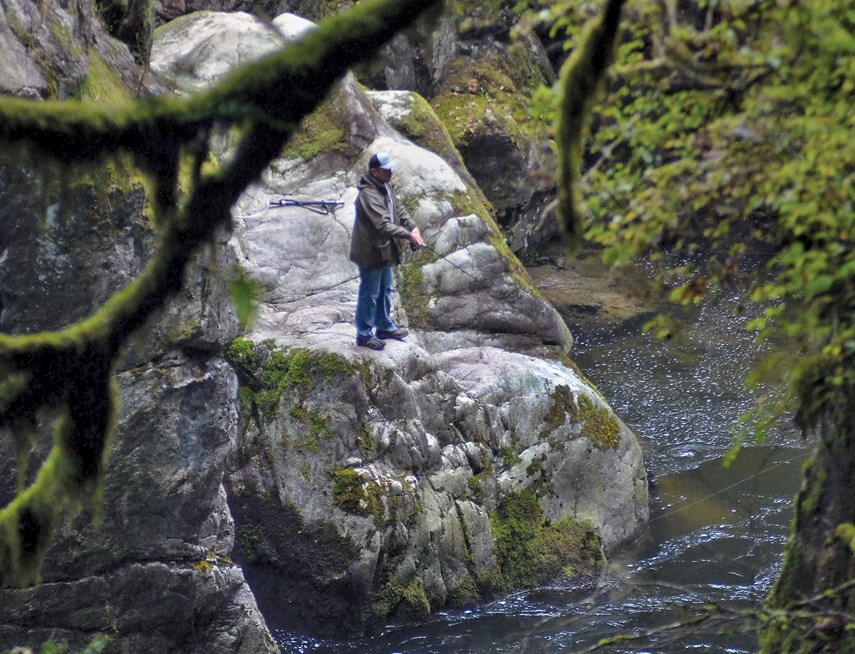Metro Vancouver has ruled out foul play in the Oct. 1 release at the Cleveland Dam that sent a torrent of water down the Capilano River, leaving one man dead and another one missing. But, the exact cause has still not been revealed.
“The investigation is still underway, and there are some questions for which we are still confirming answers, however, we are confident at this point that the event did not involve terrorism, sabotage, or malicious intent,” a statement from CAO Jerry Dobrovolny read Monday afternoon.
At the time of the release, Metro Vancouver staff was doing maintenance on both the gate and on its controls system. So far there’s no indication of whether the error was human, mechanical or related to software or other systems that send signals for the gate to be raised and lowered.
“My experience from over 33 years working with infrastructure is that when a major failure like this occurs, it generally is a combination of both human error and system error malfunction,” Dobrovolny said, addressing the media the day after the disaster.
As part of the investigation, staff will be interviewed, records will be checked and mechanical equipment will be examined, said Dobrovolny.
After the spillway opened, the river swelled up more than three metres at the Cable Pool near the Capilano River Hatchery, and its flow increased from a trickle to more than 400 cubic metres per second.
Normally when water is released from the Cleveland Dam into the river “it’s a very gradual adjustment over a much longer period of time,” said Dobrovolny.
Metro staff locked the spillway over the weekend for the early stages of the investigation but with heavy rain in the forecast, Dobrovolny said the spillway will have to be reopened again, starting Monday night to ensure lake and river levels remain safe.
“We are adding additional staff to monitor our operational practice during this activity. Once the spillway gate is fully open, we expect it will remain so through the winter,” Dobrovolny’s statement read.
In 2002, WorksafeBC ordered Metro Vancouver to “swiftly” develop, implement and enforce a written “lockout policy” that would stop the dam’s spillway from opening accidentally and conduct a risk assessment study to protect the health and safety of the public and workers.
The BC Coroner’s Service is charged with investigating the cause of death for the victim whose body was recovered. The other man is considered a missing person, which is under the jurisdiction of the RCMP.
Speaking to reporters on Friday, North Vancouver RCMP Sgt. Peter DeVries said so far there is nothing to suggest that the RCMP will be required to conduct a criminal investigation into the incident, but that could change depending on what the other investigations reveal.
“We’re not closing off any possibilities,” he said.
Numerous people have demanded to know why there was no alarm to warn anyone on the river below of the impending danger. Metro Vancouver considered but ultimately rejected installing a warning system in 2003 after similar dam malfunctions that year and the year before. At the time, senior staff told the North Shore News they were “not satisfied that an audible alarm system could be put in place that would do what it is supposed to do without annoying the public.”
That idea is back on the table now though, Dobrovolny said.
“We have heard very clearly from the public an interest in understanding the nature of alarm systems on dams,” he said. “As part of our investigation and assessment, we are exploring options to improve our system, including the possible addition of alarm systems.”
After ensuring there is no further risk to the public, Metro’s consultants did a survey of the river looking for any environmental fallout. That turned up “no stranded or isolated fish or notable concerns.”
“Naturally, the thing we are first and foremost concerned with is the impact of this event on human life and the fear and anxiety this has caused those who regularly use the park. The recommendations that result from our investigation will have this at the front of mind, as we want to be able to ensure that we have taken every available step so that this does not happen again,” the statement concluded.



